Top Tier CPU Air Coolers Q3 2015: 9-Way Roundup Review
by E. Fylladitakis on July 6, 2015 8:00 AM ESTThe Cryorig R1 Ultimate
Cryorig is a company that popped literally out of nowhere in 2013. They claim to be a company founded by experts with previous experience at other well-known companies, who banded together to both make a name for themselves and to offer "the best of all worlds". The R1 Ultimate that we have here today is the largest, most powerful cooler that they currently manufacture.
We received the R1 Ultimate well packed in a large cubic cardboard box. Everything inside the box is well packed and the bundle is well presented. Cryorig supplies the necessary hardware for the installation of the cooler, a tube of quality thermal grease and a long shank L screwdriver tool. The screwdriver tool is necessary for the installation of the cooler, unless if there is a >170 mm shank Philips PH2 screwdriver available. They also provide a third set of wire clips, for the installation of a third cooling fan.
The Cryorig R1 Ultimate is a very large dual tower cooler. Plastic frames partially cover each tower and are used as supports for the two 140 mm cooling fans. The fans are preinstalled and removing them is not necessary for the installation of the cooler. Each of the two towers has two series of fins. The silver front half of each tower consists of 42 fins, the black rear half of 53 fins. The company claims that by reducing the spacing halfway across each tower, they can accelerate the air exhaust, forcing the hot air to exit the tower faster. It is a rather peculiar approach, as a uniform gap across the entire tower could achieve the same air backpressure/speed without the extra turbulence and noise that the transition will cause. Perhaps Cryorig's research showed that this approach somehow improves thermal performance, by either thinning the boundary layer or simply through higher turbulence flow.
No strange shapes or patterns here - the front of the towers is entirely straight, with Cryorig apparently thinking that trying to improve anything by shaping the intake side of the fins is a waste of resources. The rear of the fins forms a simple geometric pattern, not just to improve the aesthetics of the cooler but also to provide insertion points for the provided screwdriver, which needs to be inserted in the gaps between the center fan and the fins for the installation of the cooler.
Cryorig is using two 140 mm fans, rebranded to their own company logo. They appear to be the same as the XF140 fans that the company retails as well. Aside from the "high precision low noise" bearing that the specifications vaguely describe, not much can be found about the fans, other than that they have a maximum speed of 1300 RPM. According to the specifications of the R1 Ultimate, they are also rated at 23 dB(A). This however is a little misleading, as this is the rating of a single fan in standard test conditions (unrestricted) within an anechoic chamber, not of two fans installed on the cooler itself.
The copper base and heatpipes of the R1 Ultimate have been nickel plated to prevent oxidization, a common upgrade for high-end products. The contact surface is very smooth but not polished down to a perfect mirror finish. In order to save a little room and install a seventh heatpipe, Cryorig placed the seven heatpipes in a slight convex formation.


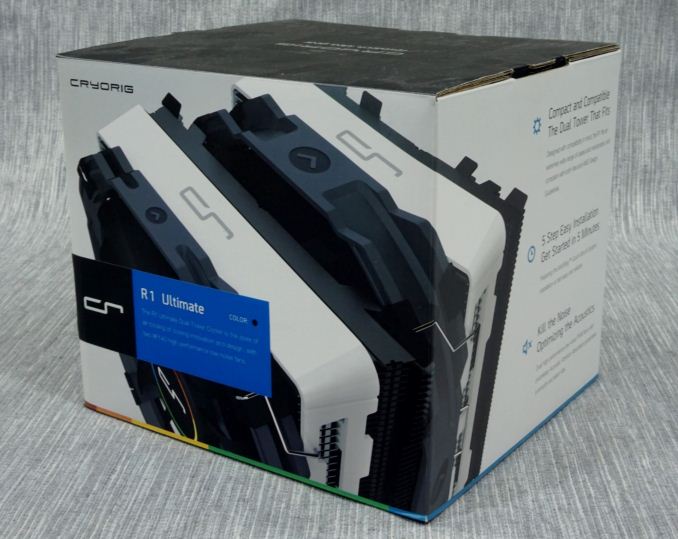
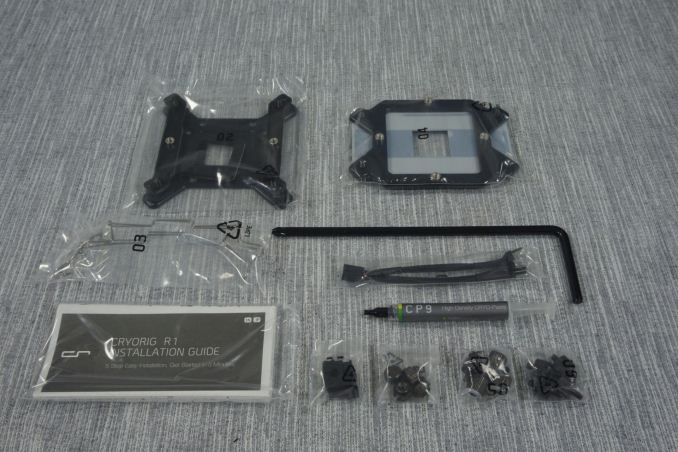
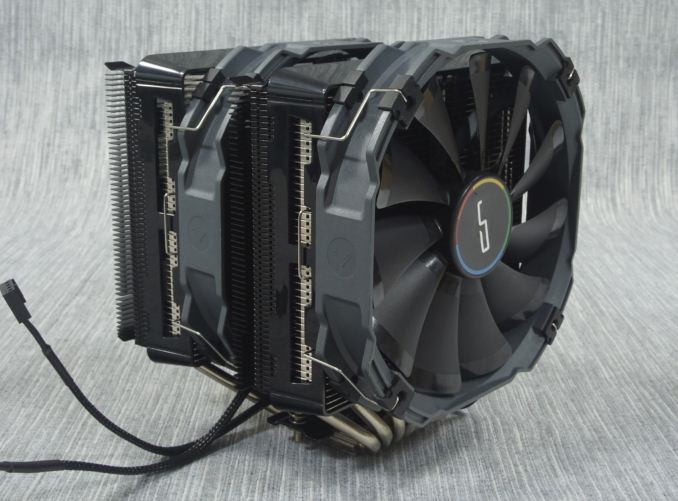
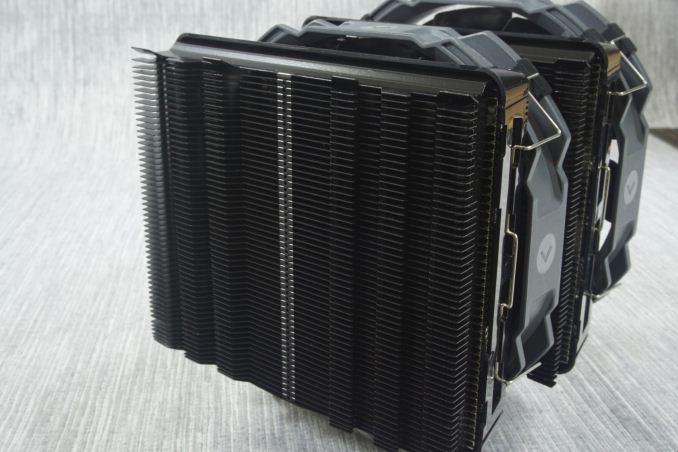
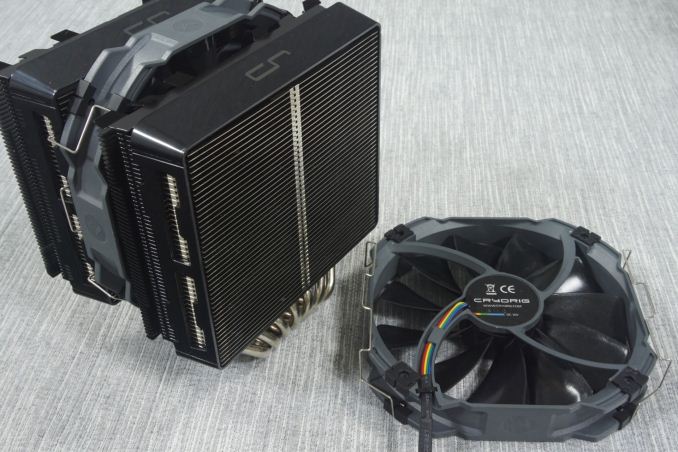
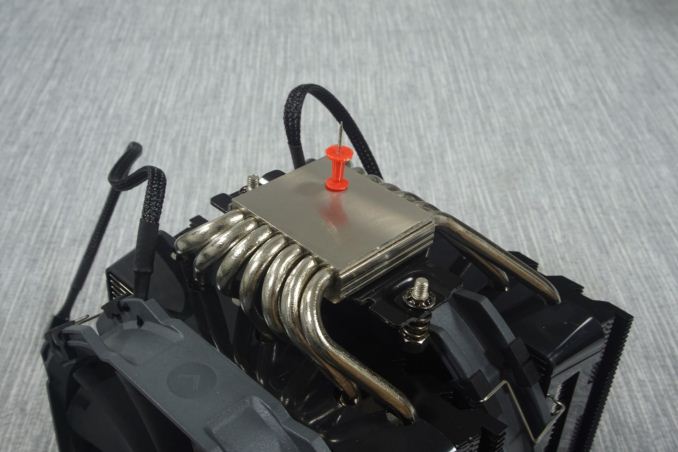








135 Comments
View All Comments
mrvco - Monday, July 6, 2015 - link
I agree. It would be helpful to know how the 212 compares both with regards to cooling and quietness. I typically prefer "quieter" so I'd be curious to know how much better the "Dark Rock Pro 3" is than the 212... is it $40+ better?Eidigean - Monday, July 6, 2015 - link
I actually bought the 212 and added a second fan to it, not because it was cheap, but because it would fit between the 2x2 banks of memory on my Rampage IV Formula perfectly (with 1 mm of space on either side) allowing the tall memory heatsinks to rise up, and inconsequentially get a breeze from the fans. The CPU runs nice and cool (and quiet) with a modest overclock.I'd get the offset Noctua NH-D15S if I ever upgrade from a 4 core 3820 to a 6 core 4930K.
effortless - Monday, July 6, 2015 - link
Exactly my thoughts. The Cooler Master Hyper 212 EVO needs to be included in this test, to show exactly what 90% who buys CPU coolers are missing out on, or eventually not missing out on.randomlinh - Monday, July 6, 2015 - link
I'm confused about your complaint. What's wrong w/ the 212? What's wrong w/ saving $10 for 1 deg celcius difference?I genuinely don't know, I have a 212 from almost 4 yrs ago? It works. It's quiet (for the time). The only complaint is if I try to go super small form factor, it won't work.
icrf - Monday, July 6, 2015 - link
If it were only $10 I might agree with you, but when it's half the price, and sometimes a whole lot less, it makes a lot of sense. I looked at the Noctua when I built my 5820 last fall, and couldn't justify the 2.5x price. For $35, the 212 EVO is a great cooler. As good as the Noctua is, it's not two and a half times as good. That's why the 212 is so popular. It's in the proverbial sweet spot.andrewaggb - Monday, July 6, 2015 - link
I agree. I've bought several 212 EVO's and I've been very happy with them. I was mostly looking for something that would run quiet under load (without overclocking) and I think they've been great. I've used some less expensive coolers and they were much worse - so in my opinion it's the cheapest cooler that met my needs.Araemo - Monday, July 6, 2015 - link
Obsession is pretty harsh given the facts... I went and looked up a comparison over on frostytech, and it looks like the Hyper 212 evo is only 2C hotter than the Noctua chosen as the realistic 'best choice'.. for 1/3 the price. Given that my ambient temps change by more than that 2C over the course of a year, 2C is never the stability margin I use on my overclocks.Nfarce - Monday, July 6, 2015 - link
Except that the 212 is not a "premium" cooler. When you start getting into extreme overclocks like I have (i5 4690k @4.8GHz, or a 23% overclock) and into water cooling needs territory, the 212 falls well more than a 2C behind which is where it is on lower level overclocks (5-15%) on my chip.StrangerGuy - Monday, July 6, 2015 - link
Who cares whether if the 212 isn't a "premium" cooler when I can simply buy the 4790K at stock 4.4GHz instead of premium cooling to barely OC a 4690K past a 4790K. You overclockers STILL think there is tremendous value to be had with OCing when the 2500K ship have long sailed.Nfarce - Wednesday, July 8, 2015 - link
According to my benchmark tests in games and applications like Sony Vegas Studio, my overclock to 4.8GHz yields quite a bit of performance increase over the stock turbo of 3.9GHz. Oh and since I was on a budget and game about 80% of the time on that 4690K rig, I justified saving the extra $100 over a 4790K and put it towards a better GPU solution.And yes, I still have a 2500K build as well (not sure what that has to do with the price of ketchup), which used to be overclocked to 4.6GHz on that NH-D14 cooler (it is now relegated to backup duties and running at stock speeds on a Zalman 9700LED cooler). Which, incidentally, roughly equals the performance of my Devil's Canyon chip running at 4.2GHz.